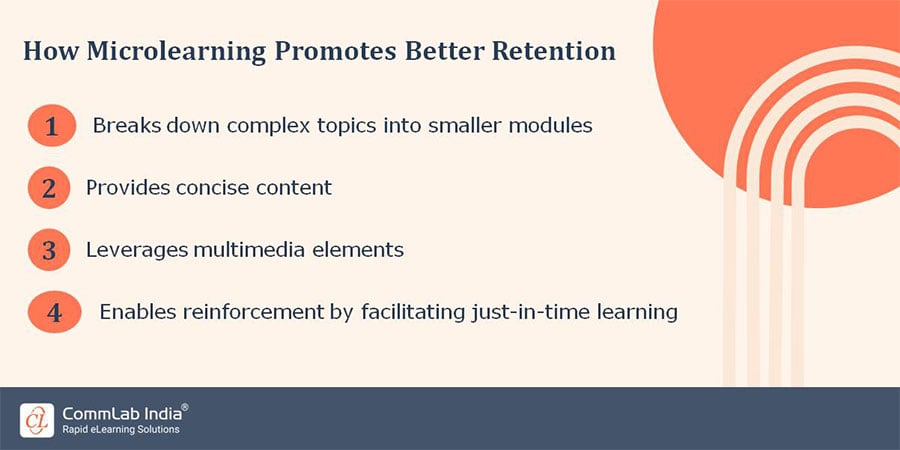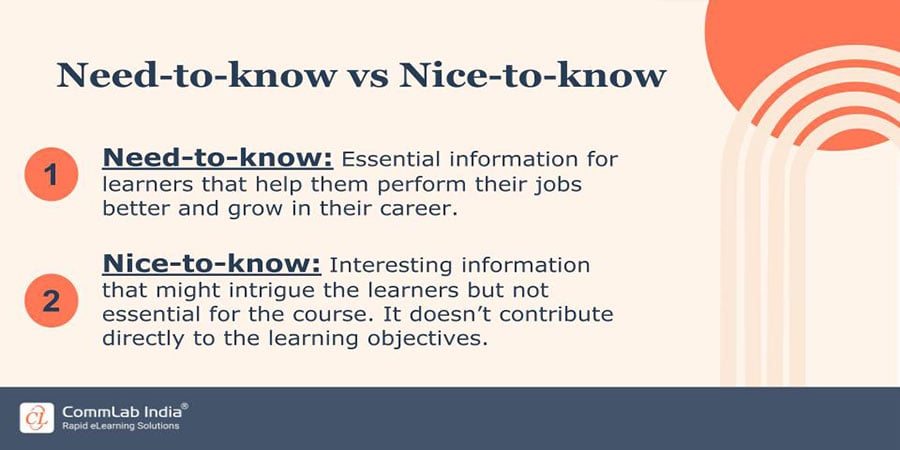5 Things to Consider While Developing a Microlearning Strategy

Imagine an employee walking up to their training manager and sharing the following problem: “I’ve been tasked with completing a training session. The session is several hours long and covers a lot of material. But I find it difficult to stay engaged for such a long period of time. Moreover, I struggle to retain the information presented in the training.”
What would you do in such a situation? I know it’s tricky! And before you begin to stress, relax. Because I’ve a perfect solution for you — Microlearning! That’s right. Microlearning is a powerful way to deliver corporate training to your employees in bite-sized nuggets. And all this needs a proper microlearning strategy.
Microlearning Strategy: The Secret to Engaging and Effective Microlearning!
And here are the 5 things to consider while developing microlearning strategy:
- Define your learning objectives
- Select appropriate microlearning formats
- Choose relevant content
- Plan and follow a robust delivery approach
- Analyze and modify
Interesting! Isn’t it?
Then let’s begin our micro adventure!!
A Good Look at Microlearning Strategy
Microlearning provides information to learners in short, concise nuggets. It adheres to the single learning objective approach and facilitates a bite-sized learning experience for employees. This might seem simple but ensuring on-point content delivery and effective training results requires a well-thought microlearning strategy. It helps you engage learners in a better way and facilitates improved knowledge retention. Check out the infographic below to know how microlearning promotes better retention.

But to create an effective microlearning strategy, there are several things you need to consider. Here we’ll explore the five key factors to consider when developing a microlearning strategy.
5 Things to Consider to Ensure Effective Microlearning Strategy
Define Your Learning Objectives
Before you start to create microlearning content, you need to identify your learning objectives as a part of your effective microlearning strategy. These objectives should be specific, measurable, and aligned with your organization’s goals. Consider what skills and knowledge your learners need to acquire, and how microlearning can help them achieve those learning objectives.
→ Download Now: Designing High-Impact Microlearning, Leveraging AI Tools
For example, if your organization is launching a new product, your learning objectives might be to ensure that all your employees have a basic understanding of the product features, benefits, and target audience. Therefore, you should design your microlearning content in a way that delivers all this information in an engaging and memorable way.
Select Appropriate Microlearning Formats
Microlearning is indeed an interesting and immersive approach with the benefit of catering to the audience with short attention spans. There are many different assets you can use in microlearning modules, such as videos, audio, quizzes, interactive simulations, or infographics. And to choose the right microlearning format, consider your learning objectives and the preferences of your learners. Different formats work better for different types of content and learners.
For example, if you need to teach a specific skill or process, an interactive simulation might be the most effective format. If you need to assess your learners’ understanding of a concept, a quiz or assessment might be more appropriate.
Choose Relevant Content
Microlearning is all about delivering short and relevant content to your learners. To make sure your training content is effective, you need to focus on quality over quantity. So don’t forget to segregate the need-to-know content from nice-to-know content. Ensure that the content is presented in a way that is easy for learners to understand and retain. Check out the infographic below to understand the difference between need-to-know content and nice-to-know content.

For example, if you’re creating a microlearning course on content marketing, you might focus on specific topics such as how to create engaging content, measuring ROI, various platforms to consider, etc. With that said, try to avoid overwhelming your learners with too much information at once.
Plan and Follow a Robust Delivery Approach
Once you’ve created your microlearning content, the next thing to consider in your microlearning strategy is the delivery of training courses. You need to deliver it to your learners in a way that is accessible and easy to use. Therefore, you need to plan whether the microlearning modules will be delivered through a learning management system, mobile app, or other channels. To decide the mode of content delivery, some important factors to consider include accessibility, ease of use, progress tracking, and learning analytics.
For example, if your learners are part of the on-the-go sales team, you might want to consider delivering your microlearning courses through a mobile app that they can access during travel time. If your learners are office-based, a learning management system might be more appropriate. Check out the video below to know why you should invest in a learning management system (LMS)
Analyze and Modify
No course is perfect just the way it is created. There are various elements that come into play once the training material is made available to the learners. To ensure effective, relevant, and learner-centric training courses, analysis and room for modification are a must in microlearning strategy. Consider learning analytics such as completion rates, engagement, and knowledge retention to measure the impact of your microlearning efforts. Gather feedback from your learners and use it to improve your content and delivery strategy.
For example, if your learners are struggling to retain information from your microlearning courses, you might consider breaking the content down into even smaller modules or using more interactive formats.
To Sum It Up!
Developing an effective microlearning strategy requires careful planning and consideration. By defining your learning objectives, selecting appropriate formats, choosing relevant content, establishing a delivery strategy, and analyzing and modifying, you can create microlearning experiences that are engaging, effective, and aligned with your organization’s goals. Check out this free eBook to know where microlearning fits in your learning strategy.




![What Microlearning Is and What It Isn’t! [Infographic]](https://blog.commlabindia.com/hubfs/Imported_Blog_Media/microlearning-quick-reference.png)
![Microlearning Trends to Look Out For in 2024 [Infographic]](https://blog.commlabindia.com/hubfs/blogs/microlearning-trends-look-out-for-info.jpg)